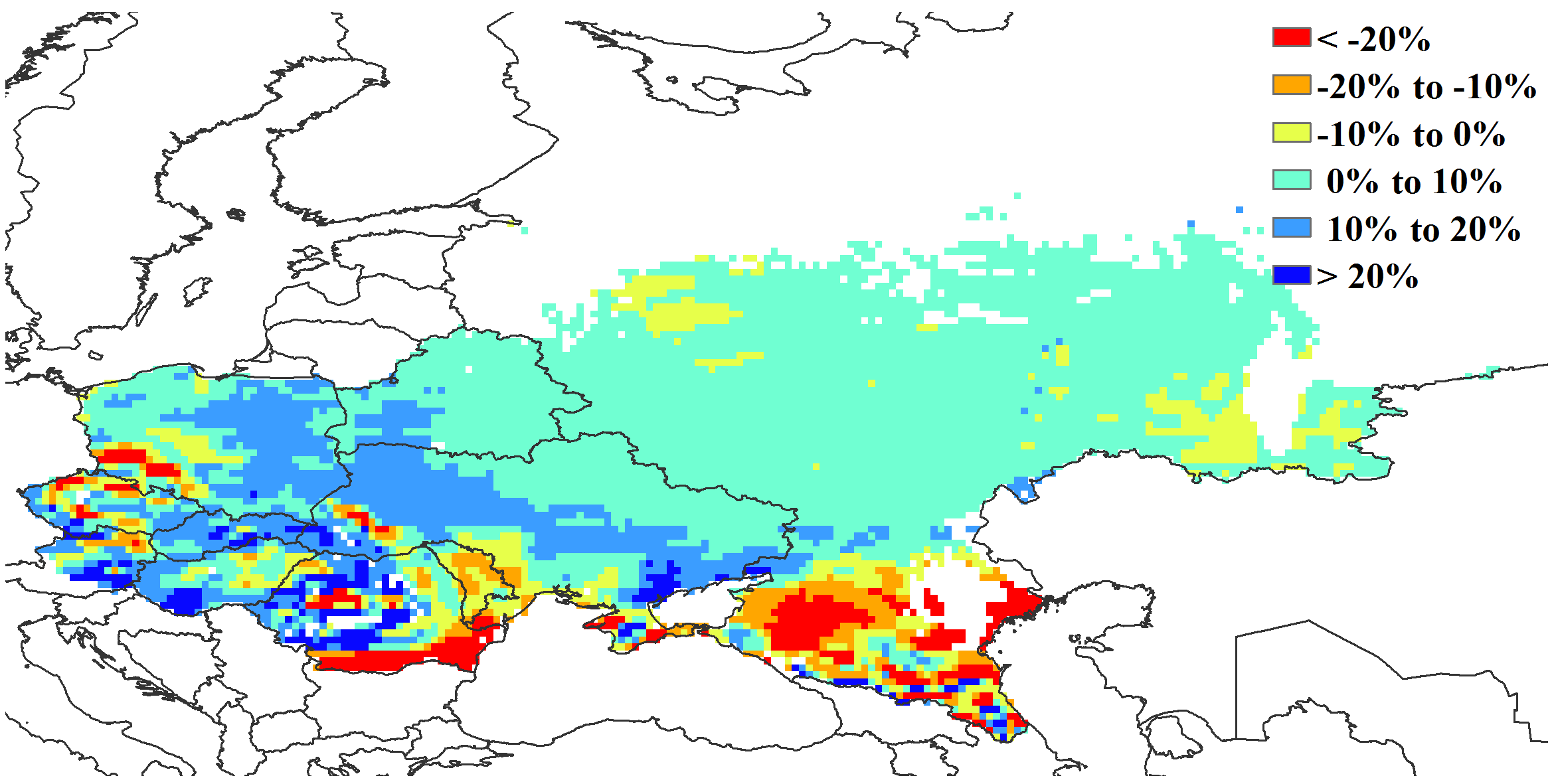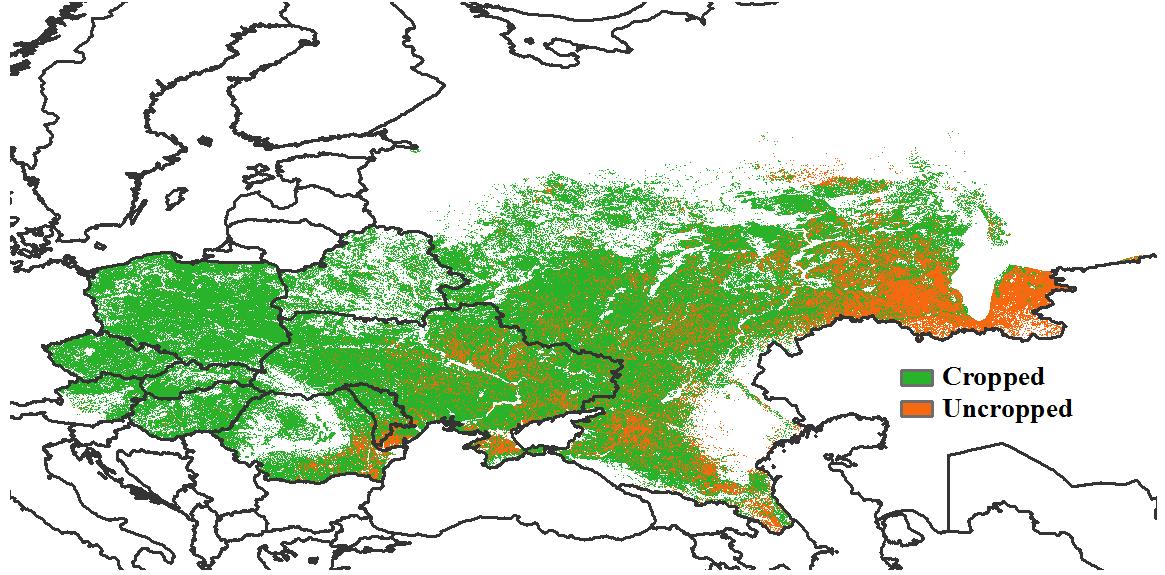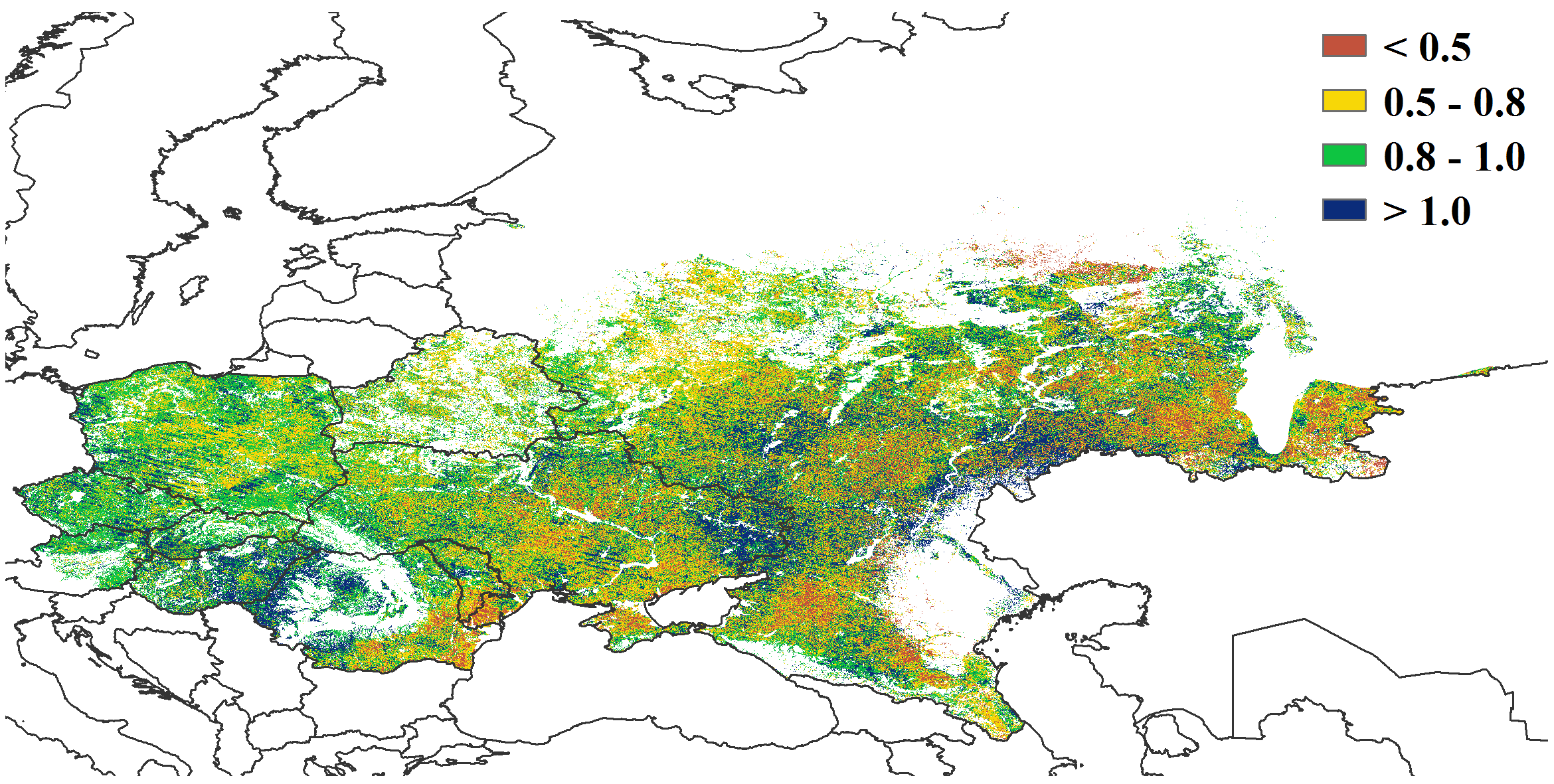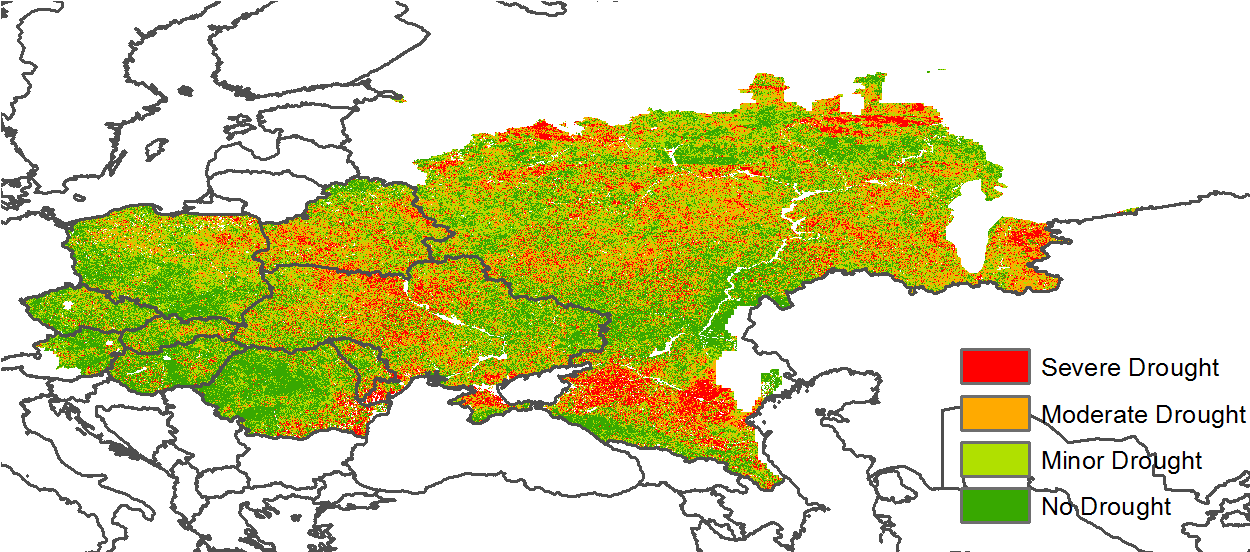This monitoring period covers the sowing and the growing period of winter crops. In general, the agroclimatic indicators in this MPZ were close to average, with higher precipitation (+1%), higher temperature (+1.2°C), and lower RADPAR (-4%), as compared to the 15YA.
According to the spatial distribution map of rainfall departure, precipitation was close to the 15 year average value and the range of fluctuation was relatively small. The specific spatial and temporal distribution characteristics were as follows: (1) In October, 43.4% of the region (the west, south and northeast of the MPZ) received below-average precipitation. The reduction of precipitation provided favorable conditions for the harvest of autumn crops and the sowing of winter crops, but may also have delayed the germination and early development of winter crops; (2) In the middle of November, 68% of the regions (the southwest, central and eastern parts of the MPZ) received above-average precipitation, and the precipitation in other areas was close to the average, which helped alleviate the negative impact of insufficient precipitation in some areas in October; (3) In the middle of December, the precipitation in all areas of the MPZ exceeded the average value; (4) From late December to the end of the monitoring period, the precipitation in 88.4% of the MPZ (the northwest, central and eastern parts of the MPZ) showed a small downward trend and remained below average until the end of January.
The spatial distribution of the temperature profiles shows that temperature fluctuated greatly in most areas of the MPZ. The specific spatial and temporal distribution characteristics were as follows: (1) In October, the average temperature in the MPZ trended higher than the average value. Only in the middle of October, the temperature in 38.2% of the MPZ (southwest Russia and eastern Ukraine) was slightly below-average; (2) In early December, the temperature in 63.4% of the MPZ was significantly below-average, mainly distributed in western Russia and eastern Ukraine; (3) In early and middle January, the average temperature of 36.5% of the western region in the MPZ was significantly higher than the average value of the same period in the past; (4) In late January, the average temperature of all regions in the MPZ was higher than the average.
On average, the potential biomass in the MPZ was higher than the 5YA (3%). The areas with a 20% lower potential biomass were mainly located in southern Romania and southern Russia; the areas with a 10% higher potential biomass were mainly located in the south-western part of the MPZ, including eastern Poland, southwestern Belarus, western and southeastern Ukraine, Slovakia, southwestern Czechia, eastern Austria, western Hungary, and western Romania.
During this monitoring period, most of the arable land in MPZ was cultivated, with a CALF value of 81% (+8%). The VCIx showed a significant spatial variation, with an average value of 0.84. The regions below 0.5 were mainly in southern Ukraine, southeastern Romania, and southwestern Russia, which was consistent with the uncropped arable land map.
Overall, CropWatch agroclimatic and agronomic indicators indicate that crop growth was expected to be slightly above average during this monitoring period.
Figure 2.6 Central Europe-Western Russia MPZ: Agroclimatic and agronomic indicators, October 2022-January 2023.

a. Spatial distribution of rainfall profiles b. Profiles of rainfall departure from average (mm)

c. Spatial distribution of temperature profiles d. Profiles of temperature departure from average (℃)

e. Biomass accumulation potential departure

f. Cropped arable land

g. Maximum VCI

h. VHI minimum
